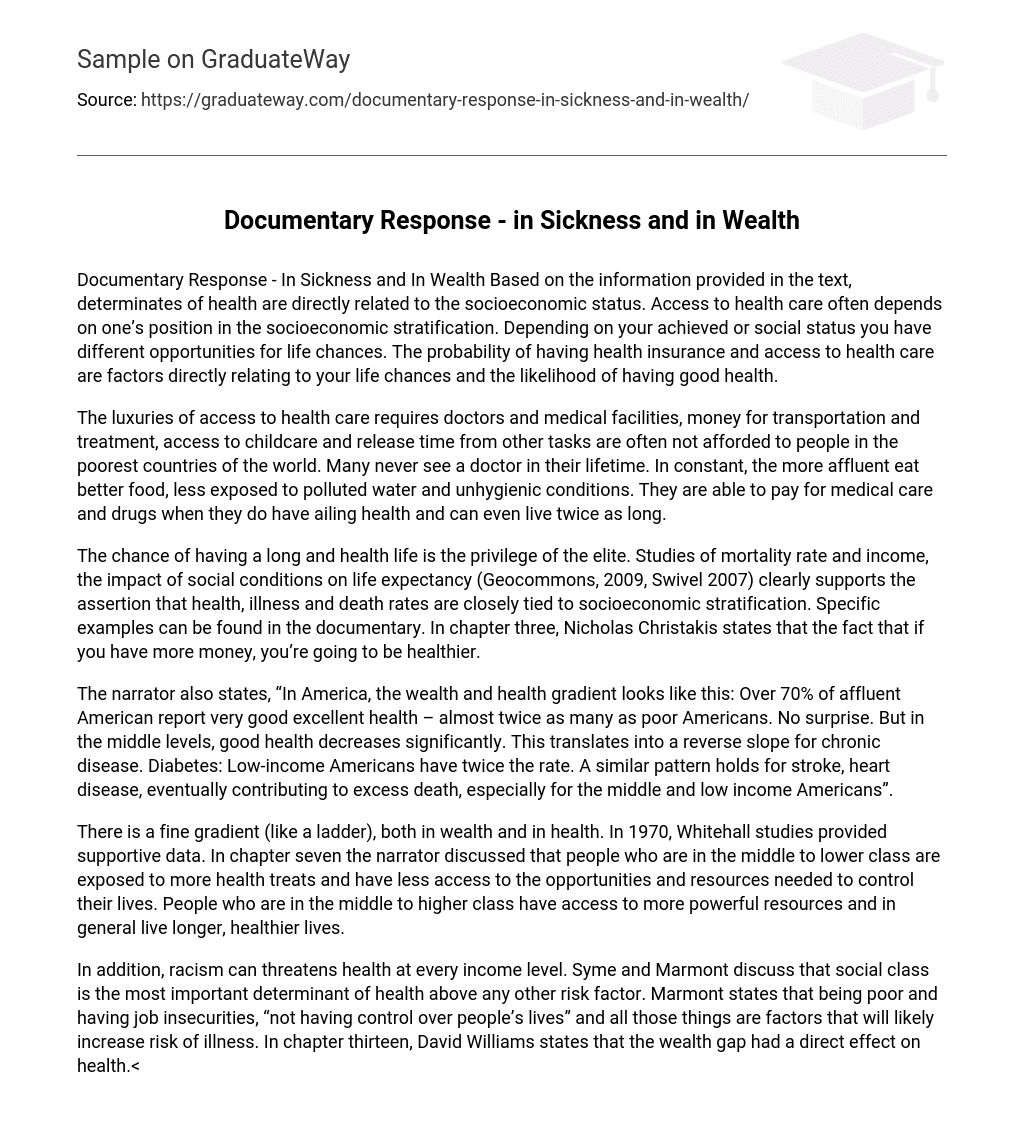Documentary Response – In Sickness and In Wealth: The text emphasizes the influence of an individual’s socioeconomic status on their health. Healthcare accessibility is often influenced by one’s position in society. Attaining a specific social standing can lead to varying life prospects. The ability to acquire health insurance and access medical care is closely tied to life prospects and maintaining good health.
Many people in the poorest countries do not have access to healthcare due to lack of doctors, medical facilities, funds for transportation and treatment. They also often lack access to childcare or time off from other tasks, resulting in them going through their entire lives without receiving medical attention.
In contrast, wealthier individuals have better access to food and are less likely to be exposed to polluted water or unclean conditions. They can afford medical care and medications when they’re sick, leading to longer lifespans—sometimes even double that of those in impoverished regions.
The text highlights the advantage of a long and healthy life for the wealthy. Research on income and mortality rate, as well as the effects of social factors on life expectancy (Geocommons, 2009, Swivel 2007), firmly establish the substantial impact of socioeconomic disparities on health outcomes, rates of illness, and death. The documentary further supports this assertion by providing specific instances. Nicholas Christakis discusses in chapter three how higher wealth is linked to better physical health.
In the United States, there is a noticeable correlation between wealth and health. More than 70% of affluent Americans state that they have excellent or very good health, which is almost twice as many compared to those who are poor. However, for individuals with middle incomes, the proportion of people reporting good health decreases considerably. This pattern is also evident in the occurrence of chronic diseases like diabetes, where low-income individuals have twice the prevalence compared to their higher-income counterparts. The same trend applies to stroke and heart disease, ultimately resulting in higher mortality rates among middle and low-income individuals.
Both wealth and health follow a continuum, resembling a ladder. The Whitehall studies in 1970 provided evidence to support this notion. In chapter seven of the study, it was highlighted that individuals from lower to middle class backgrounds encounter higher health risks due to limited access to resources and opportunities for life development. Conversely, those belonging to the upper-middle class have more influential resources and typically enjoy longer and healthier lives.
In addition, irrespective of income level, racism poses a threat to health. According to Syme and Marmont, social class outweighs all other factors in influencing health. Marmont also highlights that conditions such as poverty, job insecurity, and lack of personal agency are likely to increase the chances of illness. Additionally, in chapter thirteen, David Williams emphasizes the direct impact of wealth inequality on health.
During the 1960s and early 1970s, income inequality between black and white individuals decreased. This period also witnessed advancements in health equality among these racial groups across various indicators. Williams argues that improved economic conditions and a smaller wealth gap have a beneficial effect on health outcomes. The documentary provides three instances that endorse the notion of socio-economic status directly influencing health determinants.





